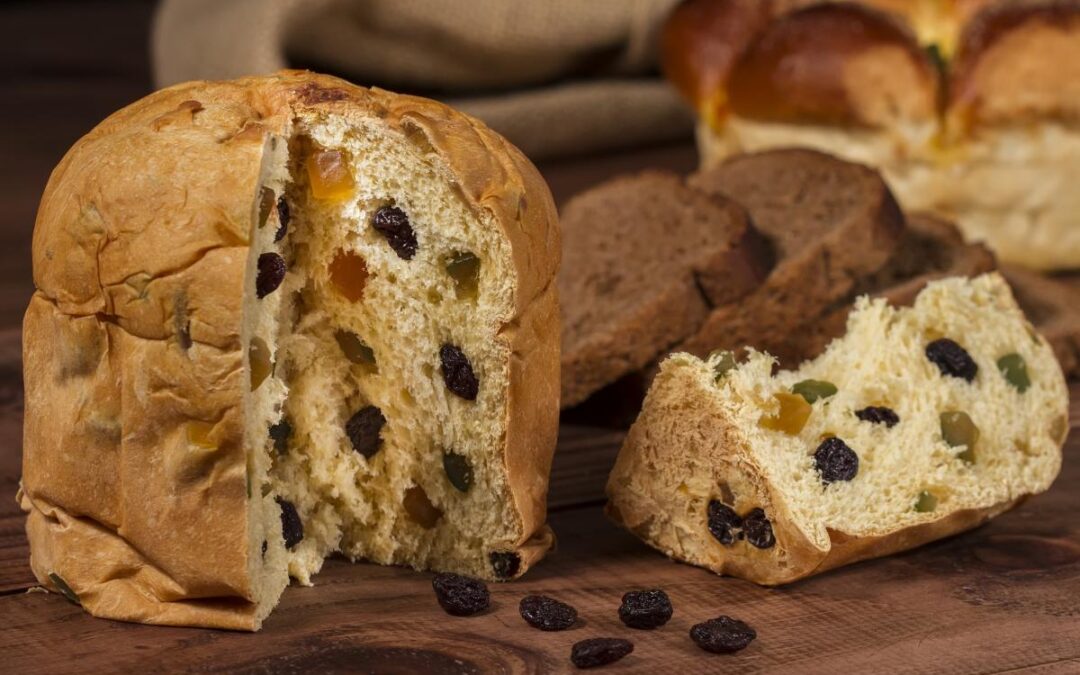One of the Italian Christmas cakes is the panettone that “rises and grows”.
It is the evolved and industrial form of the many types of sweet bread that Italian regions used to produce at home and give to loved ones in the coldest and hottest holiday of the year, Christmas.
A bread symbol of the “Dies Natalis” seems to date back to the Christians of the fourth century as a testimony of unity and brotherhood and to increase the value of the gift was mixed with flour saffron, figs, almonds and grapes, sweetened with honey.
In 1200 with the arrival of spices began to add other ingredients: various drugs and especially pepper. The discovery of America enriches the desserts with vanilla and chocolate. In the 1500s a French agronomist discovered that beet, if cooked, produced a sweet syrup similar to that of sugar cane, which was too expensive. In the middle of the 19th century “the sweet industry” was born.
It can be said that the history of dessert is the history of humanity. The dessert, in addition to the history of the ingredients, is linked to the history of the fire: from the hot stones to the fire in the oven.
When you give a dessert you give the history of humanity, the ancient and the closest to us and our childhood.
Like every region or city in Italy, Umbria also has its traditional “sweet breads” that continue to be produced both in families and in local semi-industrial pastry shops. Among these the most typical is the “Pampepato”, a mixture of cooked must, walnuts, almonds, hazelnuts, seasoned fruit, raisins, pine nuts, honey and pepper and sometimes chocolate that is prepared in small circular loaves and is kept for a long time. The aroma of spices and honey creates a characteristic and unusual taste very pleasant.
An ancient and poor Umbrian dish is the “sweet pasta”: well-cooked pasta topped with nutmeg, pine nuts, candied fruit, cocoa powder and a bit of breadcrumbs, used on days before.
We wish you a Sweet Christmas and a Happy New Year.

